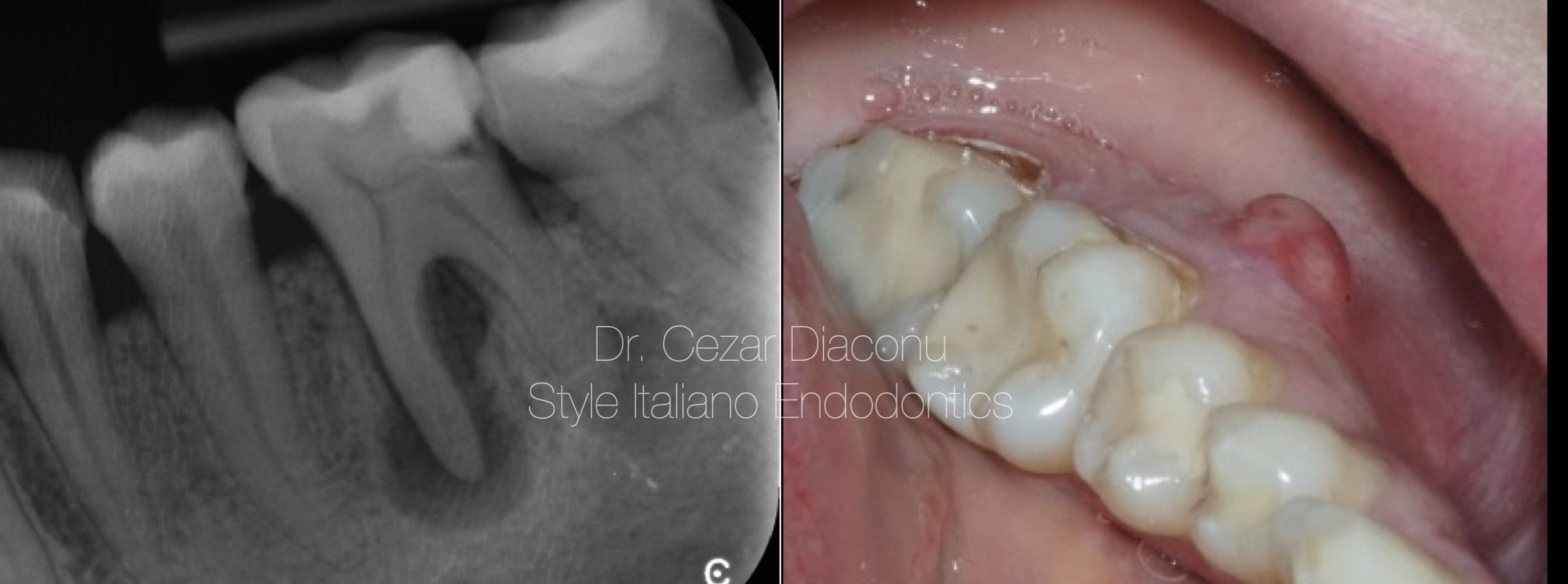
Shaping narrow canals using the forward reciproc motion– Case report
18/10/2024
Cezar Diaconu
Warning: Undefined variable $post in /var/www/vhosts/styleitaliano-endodontics.org/endodontics.styleitaliano.org/wp-content/plugins/oxygen/component-framework/components/classes/code-block.class.php(133) : eval()'d code on line 2
Warning: Attempt to read property "ID" on null in /var/www/vhosts/styleitaliano-endodontics.org/endodontics.styleitaliano.org/wp-content/plugins/oxygen/component-framework/components/classes/code-block.class.php(133) : eval()'d code on line 2
The primary goal of successful endodontic therapy is to perform a proper cleaning and shaping of the root canal system. In clinical practice, this cleaning and shaping, performed with the aid of endodontic files manufactured from stainless steel or nickel titanium (NiTi) alloy, is not always easy due the complex anatomy of the root canal system. One of the most problematic situations that a clinician can encounter during root canal therapy is file breakage inside the root canal (1). An unanticipated instrument fracture may arise as a portion of the file is subjected to cycles of compression and stretching in the region of the maximal root canal curvature [2, 3]. These tensions cause the instrument structure to disintegrate, which ultimately results in fracture [4, 5], which in turn leads to a uncertained outcome for the root canal treatment.
One way of avoiding this is to employ reciprocating motion.
According to the literature, compared to continuous rotation (CR), a reciprocating motion increases the endodontic instruments’ resilience to cyclic fatigue during instrumentation by operating continuously under the elastic limit of the instruments [6, 7].
It may be possible to employ traditional rotary glide path and file systems in a reciprocating motion when the CW rotation is greater than the CCW motion, since the instrument is cutting in a CW direction, as the flutes of most conventional systems are designed to be operated in continuous CW rotation [8].
This type of motion could be useful in clinical practice when faced with complex root canal curvatures or calcified canals.

Fig. 1
A young female patient presented to our office reporting recurrent episodes of sweling and pain when chewing on the left side. The clinical examination immediately revealed the presence of a sinus track and signs of inflammation which manifest themselves with tenderness upon percussion of the lower left first molar and carious infiltration of most of the previous restoration.
After a careful examination of the x ray and the intraoral status we established a diagnosis of symptomatic apical periodontitis and decided to perform a primary non-surgical root canal treatment.

Fig. 2
After rubber dam isolation, we removed the old coronal restoration and the infected dentin also rebuilding the distal wall using flowable composite (GC G-aenial Universal Injectable) and Palodent V3 EZ Coat matrix 6.5 mm ( Dentsply Sirona).

Fig. 3
The shaping was performed using the Protaper Next file system until X3 (30/07) on the distal root and X2 (25/06) on the mesial root. The Protaper Next file system was used in forward reciproc motion as such; the CW rotation was set to 90°, and the CCW was set to 30°. This setting allowed the files to make a full 360° CW rotation in 6 cycles.
NaOCl 5.25% was used throughout the endodontic procedure to facilitate chemical disinfection and removal of debris. After shaping, the hypochlorite was activated with sonic tips and, once cleansing was completed, we proceeded with 17% EDTA irrigation in order to remove the smear layer.

Fig. 4
Root canals obturation was done using warm vertical compactation technique
Coronal restoration was done in the same session using EverX Posterior (GC) which is a fibre-reinforced composite designed to be used as dentine replacement. In conjunction with EverX Posterior we used a conventional composite such as G-ænial Posterior (GC) as enamel replacement.

Fig. 5
The post operative x ray showed that despite of the narrow canals we managed to shape and fill to working length all the canals.

Fig. 6
Moreover, on the 6 months recall x ray we can observe a good healing.
Conclusions
In such complex cases, the forward reciproc motion considerably enhanced the cyclic fatigue resistance of all the rotary files as such improving the chances for an optimal outcome of the root canal treatment.
Bibliography
BIBLIOGRAPHY
1. Peters, O.A. Current challenges and concepts in the preparation of root canal systems: a review. J Endod. 2004 Aug, 30(8):559-567.
2. Sattapan, B.; Nervo, G.J.; Palamara, J.E.; Messer, H.H. Defects in rotary nickel- titanium files after clinical use. J Endod. 2000, 26, 161-165.
3. Parashos, P.; Messer, H.H. NiTi instrument fracture and its consequences. J Endod. 2006, 32, 1031-43.
4. Peters, O.; Chien, P.; Armitt, K.; De la Macorra, J.; Arias, A. Testing Cyclic Fatigue Resistance of Nickel Titanium Rotary Endodontic Instruments: A Validation Study for a Minimum Quality Criterion in a Standardized Environment. Frontiers, 2021, 2.
5. Gambarini, G.; Grande, N.M.; Plotino, G.; Somma, F.; Garala, M.; De Luca, M.; Testarelli, L. Fatigue resistance of engine-driven rotary nickel-titanium instruments produced by new manufacturing methods. J Endod. 2008, 34, 1003-1005.
6. Plotino, G.; Ahmed, H.M.; Grande, N.M.; Cohen, S.; Bukiet, F. Assessment of Reciprocation in Endodontic Preparation: A Comprehensive Review--Part II: Properties and Effectiveness. J Endod. 2015, 41, 1939-1950.
7. De Pedro-Muñoz, A.; Rico-Romano, C.; Sánchez-Llobet, P.; Montiel-Company, J.M.; Mena-Álvarez, J. Cyclic Fatigue Resistance of Rotary versus Reciprocating Endodontic Files: A Systematic Review and Meta-Analysis. J. Clin. Med. 2024, 13, 882.
8. Espir, C.G.; Nascimento Mendes, C.A.; Guerreiro Tanomaru, J.M.; Freire, L.G.; Gavini, G.; Tanomaru Filho, M. Counterclockwise or clockwise reciprocating motion for oval root canal preparation: A micro-CT analysis. Int Endod J. 2018, 51, 541-548.




